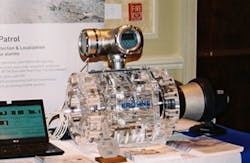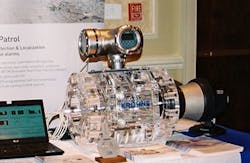The digital edition of Flow Control magazine’s 2013 “Flowmeter Technolo gy Report” went live last week, featuring all that’s fit to print in the world of flow measurement. Well, maybe not “all,” but a good bit, nonetheless.
RELATED: “Energy Applications Drive Flowmeter Technology Improvement”
In this special issue of Flow Control, Jesse Yoder, Ph.D., president of Flow Research Inc., provided a series of market snapshots covering key flowmeter technologies. The following highlights “5 Flowmeter Trends to Watch” based on Dr. Yoder’s contribution to our December issue.
-
Expanding the Application Base & Staying Relevant: Newer generation flowmeters, such as Coriolis and ultrasonic, are introducing new features and capabilities to successfully broaden their application base. For example, Coriolis manufacturers are now offering large-line size capability, which is enabling Coriolis to attract more attention for oil & gas custody-transfer applications. Meanwhile, some more traditional flowmeter technologies, such as differential-pressure and turbine are adding features in an effort to hold onto their large installed base. For example, turbine manufacturers are offering bearings made of more durable materials of construction to improve lifespan and reliability.
Obstacles & Opportunities: While regulations are a hindrance for some industrial applications, they can often represent an opportunity for technology providers. Thermal mass flowmeters are a prime example of this dynamic, as they are benefitting from demand for emissions control applications due to environmental regulations worldwide.
Energy Matters: As the demand for energy worldwide continues to rise due to population growth and development in major population centers, such as China and India, energy-based flow measurement grows more and more important. Custody-transfer measurement of natural gas, for example, is a flow application that is attracting a lot of attention at the moment. Among the technologies well positioned to serve energy-base flow measurement applications are Coriolis, differential-pressure, turbine, and ultrasonic flowmeters.
Utility Players: Magnetic and positive-displacement flowmeters represent low-cost, reliable solutions for a wide variety of applications. Magnetic flowmeters, for example, have no moving parts and have established themselves as a very stable and reliable long-term method for measurement with minimal maintenance costs. Positive-displacement flowmeters, on the other hand, are the workhorses of today’s flow measurement world, as they are widely used for billing applications for both water and gas in residential, commercial and industrial applications.
- The Wild Cards: Multiphase and vortex flowmeters seem to be on the cusp of major gains in end-user uptake. Vortex meters, for example, received API (American Petroleum Institute) approval for custody transfer of liquid and gas in 2007. And while this has not yet resulted in a significant uptick in uptake, it would seem to be only a matter of time before vortex meters receive a boost in sales as a result of their suitability for highly coveted custody transfer applications. Meanwhile, multiphase flowmeters are uniquely suited to measure the amount of oil, gas and water coming out of a well—a measurement that was previously only accomplishable after the fluids were physically separated. Multiphase meters promise significant benefits to well operators. However, the complexity of the instruments has been a limiting factor, but manufacturers figure to improve and simplify the technology over time, making it more attractive for a wider range of end-users.



